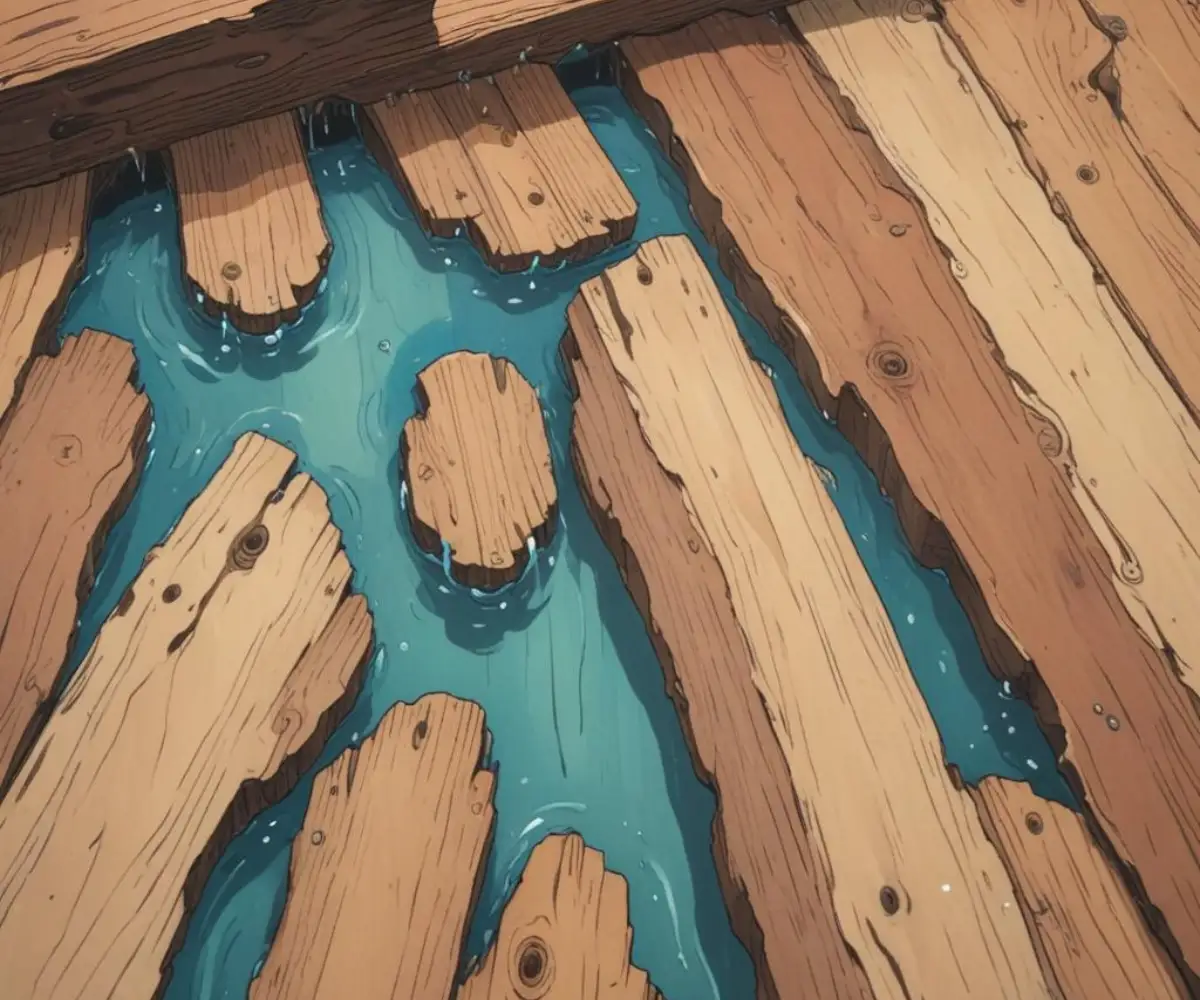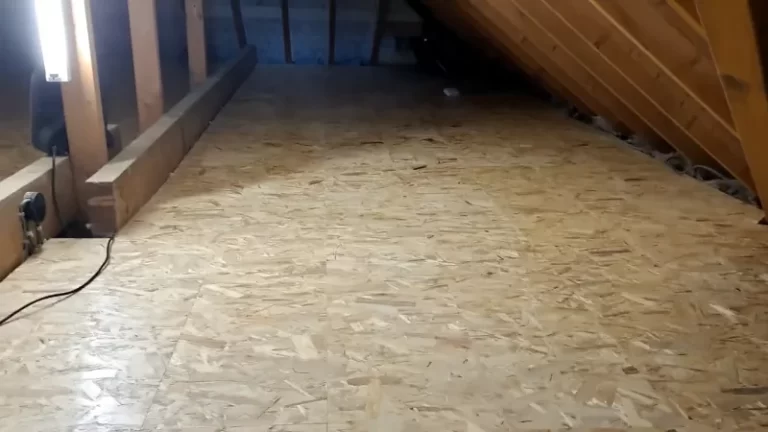Water Coming Through Floorboards? Don’t Ignore This Silent Home Killer
It’s a homeowner’s nightmare. You walk into a room and spot it—a dark stain, a slight warping of the floor, or worse, visible water seeping up between the boards. That sinking feeling in your stomach is justified; water coming through floorboards is one of the most serious warning signs your house can give you.
This isn’t just a simple spill. It’s a symptom of a hidden problem that could be causing catastrophic damage to your home’s structure, creating a breeding ground for toxic mold, and compromising your family’s safety. Ignoring it is not an option. This guide will walk you through exactly what’s happening, how to stop it, and how to protect your home from future disasters.
You'll Learn About
Why Is Water Coming Through My Floorboards? Uncovering the Hidden Source
Water on your floor is the final sign of a problem that started elsewhere. The key is to play detective and trace the water back to its origin. The cause determines your next steps, the professionals you’ll need to call, and how you can prevent it from happening again.
Plumbing Leaks: The Most Common Culprit
Your home has an extensive network of pipes hidden under floors and behind walls. When one of these fails, the floor is often the first place you’ll see evidence. A leaking or burst pipe can release a significant amount of water quickly, while a slow drip can go unnoticed for months, silently rotting your subfloor and joists.
Common signs of a plumbing leak include an unexplained spike in your water bill, the sound of running water when all faucets are off, or damp, musty smells. These leaks frequently originate from supply lines to toilets, sinks, dishwashers, and washing machines.
Foundation and Groundwater Issues
Sometimes, the water isn’t coming from inside your house but from the ground itself. After heavy rain, the soil around your foundation can become saturated. This creates what is known as hydrostatic pressure, which can force groundwater up through microscopic cracks in your concrete slab or basement floor.
This is especially common in basements or ground-level rooms. Poor exterior drainage, clogged gutters, and downspouts that deposit water right next to your foundation all contribute to this dangerous pressure buildup.
HVAC System Leaks
Your air conditioning system is another common source of indoor water leaks. The unit naturally produces condensation, which is supposed to be carried away through a drain line. If this line becomes clogged with dust, algae, or debris, the water will back up and overflow the drain pan, often leaking into the ceiling or down to the floor below.
A malfunctioning AC unit can cause significant water damage. This often starts with issues like an improperly installed AC drain pipe that blocks proper drainage, leading to overflows that can ruin floors and ceilings.
Appliance Failures
The appliances you use every day can be silent culprits. Washing machines, dishwashers, refrigerators with ice makers, and water heaters are all connected to your home’s water supply. A failing hose, a cracked connection, or an internal malfunction can lead to slow leaks that pool under the appliance and eventually seep through the floorboards.
The Immediate First Steps: Your 30-Minute Emergency Action Plan
Discovering water is alarming, but panicking won’t help. What you do in the first 30 minutes can significantly reduce the amount of damage and the cost of repairs. Follow these steps methodically.
Step 1: Shut Off the Water Main
If you suspect a plumbing leak, your first and most critical action is to shut off your home’s main water valve. This immediately stops the flow of water and prevents the problem from getting worse. Every homeowner should know where this valve is located—typically in a basement, crawl space, or utility closet.
Step 2: Ensure Electrical Safety
Water and electricity are a deadly combination. If there is standing water near outlets or electrical devices, do not touch anything. Go directly to your home’s circuit breaker and turn off the power to the affected area before you do anything else.
Step 3: Document the Damage
Before you move a single thing, pull out your phone and take extensive photos and videos of the water, the damaged floor, and any affected belongings. This documentation is crucial for your insurance claim.
Step 4: Remove Standing Water
Once the area is safe, your next goal is to remove as much water as possible. Use mops, old towels, buckets, and a wet/dry vacuum to soak up all standing water. The faster you remove the bulk of the water, the less time it has to penetrate deeper into the subfloor and surrounding structures.

Assessing the Damage and The Critical Drying Process
With the immediate crisis handled, the race against mold and structural decay begins. Simply removing standing water isn’t enough. The moisture trapped in your subfloor, drywall, and wood framing is the real long-term threat.
The Dangers of Hidden Moisture and Mold
Mold can begin to grow in as little as 24 to 48 hours in a damp environment. It releases spores that can cause serious respiratory issues and allergies. Beyond mold, trapped moisture will cause wood to rot, weakening the structural integrity of your home.
Prolonged moisture can weaken the subfloor, leading to a host of other issues. For instance, you might eventually notice problems like nails pushing up through your hardwood floors as the underlying wood warps and loses its ability to hold them securely.
Drying and Dehumidifying the Space
To dry the area properly, you need aggressive air circulation and dehumidification. Open windows if the outside air is less humid than inside. Set up high-powered fans to blow directly on the wet surfaces. Most importantly, rent or buy a large-capacity dehumidifier to pull moisture out of the air and materials.
This process is not quick. It can take several days, or even weeks, to fully dry a saturated subfloor. Don’t rush this step; trapping moisture by reinstalling flooring too soon will only lead to bigger problems down the road.
| Potential Water Source | Telltale Signs | Immediate Action |
|---|---|---|
| Plumbing Leak | Spike in water bill, sound of running water, localized wet spots. | Shut off the main water valve immediately. |
| Groundwater Seepage | Water appears after heavy rain, damp basement walls, musty smell. | Check gutters and downspouts; ensure yard drainage slopes away. |
| Appliance Failure | Puddles around a dishwasher, washing machine, or refrigerator. | Unplug the appliance and turn off its dedicated water supply valve. |
| HVAC System Leak | Water pooling around the indoor furnace/air handler unit. | Turn off the HVAC system and check the condensate drain line for clogs. |
| Roof or Exterior Leak | Water stains on ceilings or walls, water appears during/after storms. | Visually inspect the roof (from the ground) and attic for signs of leaks. |
Repairing the Source and Preventing Future Disasters
Once everything is completely dry, you can move on to the final phases: fixing the original problem and putting your home back together. This is also the perfect time to implement preventative measures to ensure you never have to go through this again.
Calling in the Professionals
Unless you are an expert, fixing the source of the water is a job for a professional. Depending on the cause, you may need to call:
- A plumber for any pipe-related issues.
- A foundation repair specialist for groundwater and hydrostatic pressure problems.
- An HVAC technician for a leaking air conditioner.
- A water damage restoration company for professional drying and mold remediation.
Preventative Maintenance: Your Best Defense
The best way to deal with water damage is to prevent it from ever happening. Integrate these simple checks into your regular home maintenance routine:
- Inspect Appliance Hoses: Annually check the hoses on your washing machine, dishwasher, and refrigerator for any signs of cracking, bulging, or brittleness. Replace them every five years regardless of their appearance.
- Know Your Shut-Off Valve: Ensure everyone in your household knows the location of the main water shut-off valve and how to operate it.
- Maintain Your Gutters: Clean your gutters at least twice a year to prevent clogs. Ensure downspouts direct water at least six feet away from your foundation.
- Service Your HVAC: Have your HVAC system professionally serviced every year. A technician will clean the condensate drain line and check for potential issues.
- Install Water Alarms: Place inexpensive battery-operated water detectors near high-risk areas like the water heater, sump pump, and washing machine.
Taking a comprehensive approach to home care is key. Just as you protect the inside of your home from water, think about how you manage the elements outdoors. For example, enhancing your patio or deck with a quality retractable sail shade can help control sun and rain, contributing to the overall upkeep and protection of your property.
Conclusion: Taking Control After a Water Crisis
Seeing water come through your floorboards is a deeply unsettling experience. However, by acting quickly to stop the source, thoroughly drying the affected area, and taking proactive steps to prevent future incidents, you can overcome the damage and protect your home’s long-term health. Treat it as the serious warning it is, and you will turn a potential catastrophe into a manageable repair.

